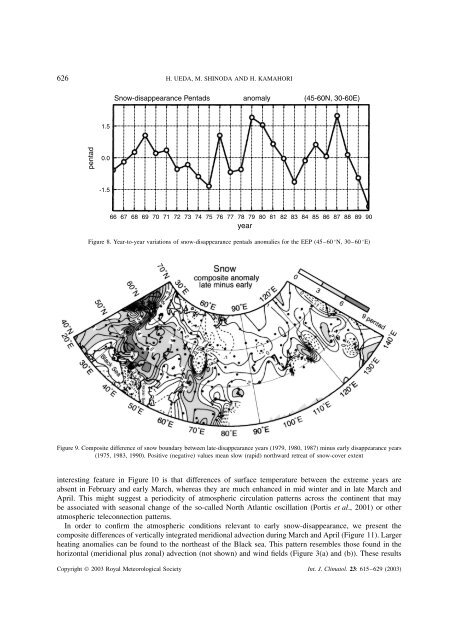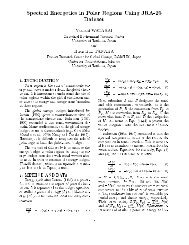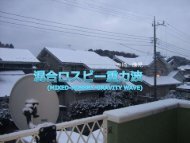Get PDF (2323K) - Wiley Online Library
Get PDF (2323K) - Wiley Online Library
Get PDF (2323K) - Wiley Online Library
Create successful ePaper yourself
Turn your PDF publications into a flip-book with our unique Google optimized e-Paper software.
626 H. UEDA, M. SHINODA AND H. KAMAHORI<br />
pentad<br />
1.5<br />
0.0<br />
-1.5<br />
Snow-disappearance Pentads<br />
66 67 68 69 70 71 72 73 74 75 76 77 78 79<br />
year<br />
anomaly (45-60N, 30-60E)<br />
80 81 82 83 84 85 86 87 88 89 90<br />
Figure 8. Year-to-year variations of snow-disappearance pentads anomalies for the EEP (45–60 °N, 30–60 °E)<br />
Figure 9. Composite difference of snow boundary between late-disappearance years (1979, 1980, 1987) minus early disappearance years<br />
(1975, 1983, 1990). Positive (negative) values mean slow (rapid) northward retreat of snow-cover extent<br />
interesting feature in Figure 10 is that differences of surface temperature between the extreme years are<br />
absent in February and early March, whereas they are much enhanced in mid winter and in late March and<br />
April. This might suggest a periodicity of atmospheric circulation patterns across the continent that may<br />
be associated with seasonal change of the so-called North Atlantic oscillation (Portis et al., 2001) or other<br />
atmospheric teleconnection patterns.<br />
In order to confirm the atmospheric conditions relevant to early snow-disappearance, we present the<br />
composite differences of vertically integrated meridional advection during March and April (Figure 11). Larger<br />
heating anomalies can be found to the northeast of the Black sea. This pattern resembles those found in the<br />
horizontal (meridional plus zonal) advection (not shown) and wind fields (Figure 3(a) and (b)). These results<br />
Copyright © 2003 Royal Meteorological Society Int. J. Climatol. 23: 615–629 (2003)
















